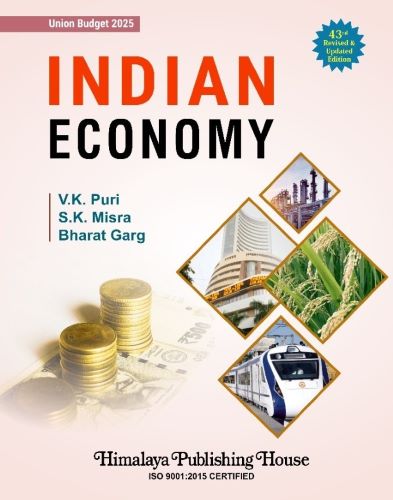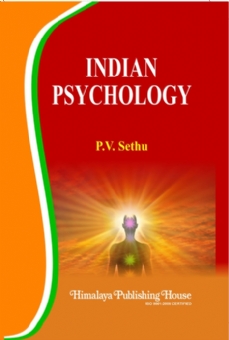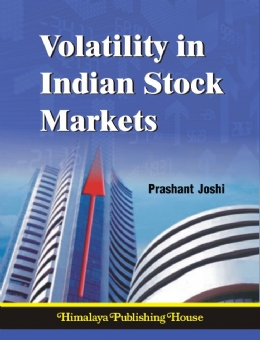In terms of GDP, India is presently the fifth largest economy in the world behind USA, China, Germany and Japan. It is likely to surpass Japan to become the fourth largest economy in a few months from now, and then overtake Germany in about three years time to become the third largest economy in the world. Then onwards, the order is likely to remain unchanged for a long period of time, with USA continuing to be the largest economy, followed by China and then by India. However, in terms of per capita income, India is likely to remain considerably behind advanced countries as is clear from the fact that its GNI per capita was only $2,540 in 2023 against the GNI per capita of $48,224 of the high income economies, and GNI per capita of $10,588 of upper middle income economies. Although the Prime Minister has laid down the goal of making India a high income economy by 2047, that is the 100th year of Indian Independence, the goal is not likely to be achieved. India is likely to remain a lower middle income economy, and will have to struggle hard to become an upper middle income economy. Moreover, it will also have to intensify its efforts to achieve the 17 goals and associated 169 targets of the Sustainable Development Goals (SDGs), part of the United Nations’ 2030 Agenda for Sustainable Development adopted in 2015 as now only six years remain to meet the targets (the 2015 Agenda has laid down the target of meeting the goals by the year 2030. In the present updated and revised edition of our book, we consider all issues related to India’s development and pointedly bring out the need for an effective policy to increase employment, reduce income inequalities, improve education and health facilities, and reduce regional disparities.
The organisation, structure and contents of the present edition are as follows:
Part I of the book ‘Economic Development: A Theoretical Background’ is divided into three chapters. It discusses the concepts of economic growth and development, common characteristics of underdeveloped countries, the role of economic and non-economic factors in economic development, the concept of human development, human development index, gender inequality index, multidimensional poverty index, etc., and issues concerning the relationship between environment and development.
Part II discusses the ‘Structure of the Indian Economy’ and consists of thirteen chapters. It is devoted to the discussion of various issues relating to the nature of the Indian economy including the natural resources and ecological issues, infrastructural development, population problem, unemployment and poverty (including a discussion on universal basic income), income growth and inequalities, etc.
Part III of the book ‘Basic Issues in Agriculture’ consists of nine chapters. It starts with a discussion of the role, nature and cropping pattern of Indian agriculture and then takes up for discussion the issues in Indian agricultural policy (including a review of the new global opportunities and challenges facing Indian agriculture in the wake of the various agreements concluded under WTO). We then proceed to a discussion of agricultural production and productivity trends, progress and failures in the field of land reform, green revolution and its impact on the rural economy of the country, agricultural finance and marketing, agricultural prices and agricultural price policy, the food security system in India, and agricultural labour.
Part IV on ‘The Industrial Sector and Services in Indian Economy’ consists of ten chapters. It starts with a discussion of industrial development during the period of planning and then proceeds to discuss some major industries of India. This is followed by a discussion of small-scale industries, industrial policy, role and performance of public sector enterprises, the issue of privatisation in public sector enterprises, role of private sector in the Indian economy, CSR (corporate social responsibility), the problem of industrial sickness, and various issues relating to industrial labour. The last chapter in this part (Chapter 35) discusses the growth of the services sector and related issues.
Part V of the book concerns ‘Foreign Trade and Foreign Capital.’ Consisting of eight chapters, it starts with a discussion of the changes in the composition and direction of India’s foreign trade, and then proceeds to a discussion of India’s balance of payments, trade policy, policy relating to foreign capital, exchange rate and capital account convertibility, MNCs (including a discussion on FERA and FEMA), etc. The last two chapters of this part discuss in detail the opportunities and challenges that the Indian economy faces in the new global environment and also examines critically the working of the WTO.
Part VI on ‘Money and Banking’ consists of six chapters. It starts with a discussion of the problem of inflation in India and then takes up the discussion of Indian money market, expansion and progress of commercial banking in India, Reserve Bank of India and a critical appraisal of its monetary policy, development of capital market in India and steps taken to strengthen this market in recent years (including steps taken by SEBI) and institutional financing.
Part VII on ‘Public Finance’ contains five chapters. In this part, we start with a discussion of the Indian tax structure (including a discussion on GST). This is followed by a discussion of public expenditure and public debt in India. The chapter on ‘India’s Fiscal Policy’ in addition to discussing the various aspects of fiscal policy as is being implemented in India, examines the issue of fiscal responsibility in detail. The last chapter of this part focuses on the issues related to federal finance in India. It also discusses the report of the Fifteenth Finance Commission in detail which was submitted in two parts – Part I covering only one year 2020-21 and Part II covering the five-year period 2021-22.
Part VIII is the last part of the book is on ‘Economic Planning and Policy.’ It contains eight chapters. Starting from a discussion of the rationale, features and objectives of planning, we proceed to discuss the strategy of development as envisaged in the various five year plans. This is followed by a discussion of regional planning in India, the problem of black money (including a discussion on demonetisation), an assessment of economic performance in the post independence period, a discussion of economic reforms and liberalisation, the impact of Covid-19 Pandemic on the Indian Economy, and a detailed discussion and appraisal of the Interim Union Budget 2024. There is also a supplementary chapter on Union Budget 2024 which was presented on July 23, 2024.
Contents –
PART – I : ECONOMIC DEVELOPMENT: A THEORETICAL BACKGROUND
1. Economic Growth, Development and Underdevelopment
2. Economic and Human Development
3. The Environment and Development
PART – II : STRUCTURE OF THE INDIAN ECONOMY
4. Colonialism and Underdevelopment of the Indian Economy
5. Nature of the Indian Economy
6. Natural Resources
7. Infrastructure
8. The Population Growth and Economic Development
9. Some Demographic Issues
10. Human Resource Development: Education and Health
11. Labour Force Growth and Occupational Pattern
12. Employment and Unemployment in India
13. Capital Formation in India
14. National Income of India: Macroeconomic Overview
15. Poverty in India
16. Income Inequalities in India
PART – III : BASIC ISSUES IN AGRICULTURE
17. Indian Agriculture: Role, Nature and Cropping Pattern
18. Issues in Indian Agricultural Policy and Rural Development
19. Agricultural Production and Productivity Trends
20. Land Reforms
21. Agricultural Inputs and Green Revolution
22. Agricultural Finance and Marketing
23. Agricultural Prices and Agricultural Price Policy
24. Agricultural Subsidies and Food Security in India
25. Agricultural Labour
PART – IV : THE INDUSTRIAL SECTOR AND SERVICES IN INDIAN ECONOMY
26. Industrial Development During the Post-independence Period
27. Some Major Industries of India
28. Small-Scale and Cottage Industries
29. Industrial Policy
30. Public Sector in the Indian Economy
31. Privatisation of Public Sector Enterprises: The Disinvestment Programme in India
32. Some Issues Related to Private Sector
33. Industrial Sickness in India
34. Labour Relations and Social Security
35. Services Sector in Indian Economy
PART – V : FOREIGN TRADE AND FOREIGN CAPITAL
36. India’s Foreign Trade: Value, Composition and Direction
37. India’s Balance of Payments
38. Trade Policy of the Government of India
39. Foreign Capital and Aid
40. India’s Exchange Rate Policy, Foreign Exchange Reserves and Capital Account Convertibility
41. Multinational Corporations, FERA and FEMA
42. Globalisation and its Impact on the Indian Economy
43. WTO and India
PART -VI : MONEY, BANKING AND FINANCE
44. Price Trends and Inflation
45. Indian Money Market
46. Commercial Banking in India
47. The Reserve Bank of India
48. Capital Market in India
49. Institutional Financing
PART – VII : PUBLIC FINANCE
50. The Indian Tax Structure
51. Public Expenditure in India: Trends and Issues
52. Public Debt in India
53. India’s Fiscal Policy
54. Federal Finance in India — Centre-State Financial Relations
PART – VIII : ECONOMIC PLANNING AND POLICY
55. Economic Planning — Rationale, Features and Objectives
56. The Strategy of Planning
57. Regional Planning in India
58. Black Economy in India
59. A Review of Economic Performance Since Independence
60. Economic Reforms and Liberalisation
61. COVID and Indian Economy
Index






